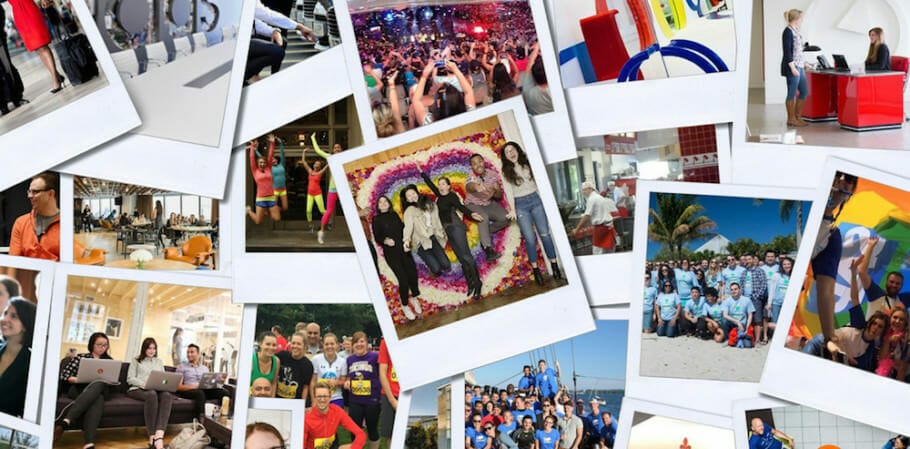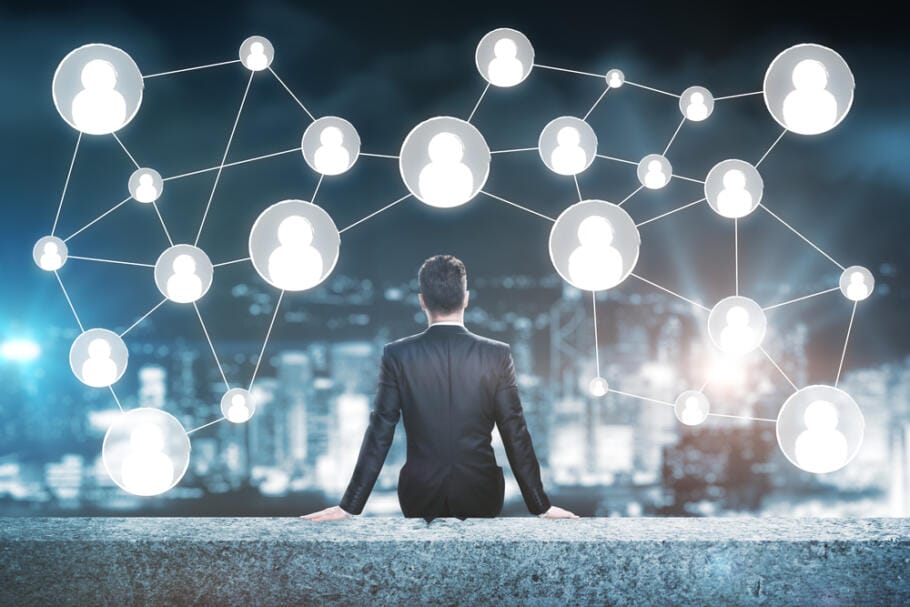Your shopping cart is currently empty!
For their successful, good life Information you really need: Government-funded publisher, awarded the Global Business Award as Publisher of the Year: Books, Magazine, eCourses, data-driven AI-Services. Print and online publications as well as the latest technology go hand in hand - with over 20 years of experience, partners like this Federal Ministry of Education, customers like Samsung, DELL, Telekom or universities. behind it Simone Janson, German Top 10 blogger, referenced in ARD, FAZ, ZEIT, WELT, Wikipedia.
Disclosure & Copyright: Images created as part of a free collaboration with Shutterstock.
Colleague AI ?! How human-machine cooperation works
By Norbert Huchler (More) • Last updated on October 15.01.2024, XNUMX • First published on 29.06.2020/XNUMX/XNUMX • So far 5475 readers, 1806 social media shares Likes & Reviews (5 / 5) • Read & write comments
The use of artificial Intelligence (AI) fundamentally changes the division of tasks between humans and machines. Learning AI systems can carry out increasingly complex activities independently and will work hand in hand with employees in the future. how does it look in action?

- Interplay of technical functionalities and human skills
- It depends on the quality of the interaction
- The idea of complementarity between humans and AI
- Co-evolution of humans and AI
- Interactive AI in concrete use in medium-sized companies
- AI in action against pandemics and their consequences
- Criteria for designing the MMI at AI
- Looking to the future of AI: what's next?
Interplay of technical functionalities and human skills
For the Working world This raises the question: How can human-machine interaction (MMI) be designed to be “human-friendly” or in the interests of the employees? Aiming for this is not only seen as a social consensus, but spiegelt is also reflected in the political goals of AIStrategy of the federal government: The employees should be placed at the center of the digital change and taken along. Especially for the design and use of highly interactive AI systems, however, concepts are needed as to how employees are not de-qualified or even displaced, but can instead benefit from AI.
AI systems often work undetected in the background - e.g. to control other technical systems or at the user interface such as voice recognition in mobile phones. Increasingly, however, learning systems in particular also dare to interact directly with the People. Highly adaptable, they should not only deal flexibly with the respective situation, but also learn something new through interaction with people and optimize the joint result. The aim is, for example, to create lightweight robotic arms that, in direct close cooperation with humans, can predict the next work steps and provide situational assistance as a "third arm", or software assistants that learn from observing work on the PC how to independently prepare and complete individual repetitive work steps take over.
It depends on the quality of the interaction
Here, the focus is on the quality of the interaction. Especially in the work context, it is not enough to just pay attention to usability or ergonomic, intuitive, simple use. to be added Ask of responsibility and decision making or the inclusion of Background, experience and Competencies of employees. Because these are not consumers, but carriers of a rich working capacity that needs to be promoted and used appropriately.
Objective When designing highly interactive AI systems, it should be to ensure the best possible interaction between the functionalities of the system and the competencies of people. This involves both how a work item is completed and how it should be done. In the work, the requirements of the subject of work must be compared with various operational goals, the interests of the employees and the social (e.g. legal) framework. Such a competence-based, functional and framed interaction between humans and AI is assumed here to be the optimum for MMI.
The idea of complementarity between humans and AI
This is based on a consideration that should be proposed as a guideline in the change of work with AI: The Idea the complementarity between humans and technology. Man and technology can also be in Future in many places - especially in direct interaction - complement each other. However, that's what it's for centrally, the difference in skills and Features on both sides, to bring them together fruitfully and to promote their development.
Even if it is important that technical interfaces are "humanized" in the sense that they adapt to the natural forms of human interaction (e.g. language, gestures, touch), with a view to a sustainable division of labor for mutual benefit, it must be about possibilities of mutual complementarity. This requires a systematic examination of the differences between humans and technology and, in particular, of the deficits and needs for technical supplements Solutions. Where is AI not enough? Why do people need it?
Co-evolution of humans and AI
AI, the human and the Society serves should not be restricted in its functionality, but at the same time it must be developed in such a way that there is no narrow-minded focus on the imitation and replacement of human activity, but rather a systematic and dynamic search for how technology and people - in the sense of a "co- Evolution" - can be promoted and promoted at the same time in their development. The driving force behind the development of technology should not be the imitation and trumping of humans, but the search for a superior complementarity relationship between humans and technology. The best results can also be expected from this.
This applies all the more if, in the course of the introduction of AI at work, activities and job profiles are re-tailored, or central processes are automated. Because even around automated areas (upstream, parallel and downstream) there are always new activities and new opportunities for supplementary relationships - and this at all qualification and work levels.
The focal point of complementarity is human-machine interaction. Whose sustained Humane design with AI can therefore be understood as a learning field for this thinking.
Interactive AI in concrete use in medium-sized companies
Here is an example of how interactive, adaptable AI can be used in assembly in just a few years - one of the application scenarios the Learning Systems platform. The medium-sized family company Bandorf produces cable harnesses for the automotive industry. According to the different models and individual customer requirements, different cable runs and cable lengths must be put together with high accuracy. Intelligent robot tools support skilled workers when laying the cables on assembly tables, on which the cable harnesses are precisely mounted. The sensitive tools adapt flexibly to the work steps that vary from job to job. For this purpose, the employees program the self-learning robot tools themselves on-site, if necessary, by showing them the processes in which they can assist.
Safe and varied cooperation Classic robot systems are developed by trained specialists for specific Tasks designed, built, programmed and tested. This process typically takes several months and causes high levels again and again Costs, which often only pay off in mass production. On the other hand, adaptive robot tools enable more flexible partial automation. They work reliably together with people – right where they are needed. To do this, they adapt to people and their work environment – and not the other way around.
AI in action against pandemics and their consequences
Another field of application for AI is, for example, a pandemic and its consequences. Frank Kirchner, Chair of Robotics at the University Bremen, Scientific Director of Robotics Innovation Center (DFKI GmbH) and head of the working group Hostile Environments of the Platform Learning Systems clarifies:
From a technical point of view, intelligent robotics could already clear be realized with a greater degree of automation than is the case - and in the pandemic lead to a great deal of relief for the urgently needed staff. An example of this is hospitals and care facilities, where intelligent robots could relieve specialists in cleaning, distributing food, disinfecting or moving beds back and forth. In agriculture, intelligent field robots could do work that harvest workers from other countries do – be it harvesting or sowing seeds for individual plants such as strawberries or asparagus. If, for example, harvest workers can no longer enter the country without any problems, the great relief potential of AI-based robots can be clearly seen. Another area is energy supply. Here, through the use of intelligent inspection robots, important infrastructures can also be operated and monitored without human personnel. This applies, for example, to oil production facilities, which may have to be evacuated if an infection occurs on site. However, permanent monitoring is also required in the field of renewable energies – for example in offshore wind farms – which specialists currently have to carry out. Intelligent automation could bring relief here - for example through (partially) autonomous underwater robots, with which a Communication in an emergency it is even possible to work from home.
Criteria for designing the MMI at AI
So how can such a humane human-machine interaction be designed? Various criteria are relevant for a human-friendly MMI, which are specifically aimed at the design of the AI systems in the work context. In the Federal Ministry for Education and Research (BMBF) initiated platform learning systems was interdisciplinary made up of representatives Companys, Science and unions / associations developed a catalog of criteria. The catalog comprises a total of twelve criteria that can be bundled into four clusters:
Cluster 1: Protection of the Individual
- Health and safety
- Data protection and responsible service recording
- Diversity sensitivity and freedom from discrimination
Cluster 2: trustworthiness
- Quality of the data available
- Transparency, explainability and freedom from contradictions
- Responsibility, liability and system trust
Cluster 3: reasonable division of labor
- Adequacy, relief and support
- Actor and situation control
- Adaptivity, fault tolerance and customization
Cluster 4: Favorable working conditions
- Areas of action and extensive work
- Promotion of learning and experience
- Communication, cooperation and social integration
The catalog compares common criteria of work and technology design with the special challenges of AI systems, such as explainability, attribution of responsibility, etc. With the focus on the MMI, there are also new nuances and factors that specifically affect the quality of the interaction turn off. Two such criteria will be selected and briefly outlined here:
Agency and situation control (criterion 8)
When interacting with learning AI, employees are usually confronted with a new situation: The systems are designed in such a way that they approach employees automatically or react to them while they work in the background at the same time. You can “request” or “compel” your users to act in a predetermined and, in some cases, also to act in a new way, so that the AI system acts as a kind of “actor” towards people in certain situations. This shifts part of the agency or situation control to the side of the technical system. At the same time, a sufficient degree of situation control is essential for the ability to act, Motivation and also Health of employees.
This conflict relationship is resolved when the transfer of responsibility for action to the technical system does not restrict but expands the human capacity to act – in the sense of a relationship of complementarity. In order to collaborate interactively and complementarily "in a division of labour", the role of the actor and the corresponding handovers must also be clearly clarified. In the interaction, it must be clear who is currently contributing what to a common process, who is responsible for situation control for the respective sub-process and where or how the sub-processes connect to each other. In doing so, it is necessary to Regulate to define and create possibilities. This is necessary for a possible attribution of responsibility and to relieve the situation of unclear ones risks. A transparent and influenceable agency is the linchpin for a complementary "division of labor" between humans and the AI system.
Promotion of learning and experience (criterion 11)
Humans and AI systems differ in terms of acquisition, processing and storage, reproduction and retrieval, as well as the application of knowledge. Accordingly, they learn differently, but can mutually reinforce each other. Firstly, the interaction with AI systems must be designed to promote learning and experience by enabling the acquisition of knowledge and experience in the usage process. Second, the employees must be able to interactively validate and, if necessary, correct the learning content (data quality) and learning behavior (links) of the intelligent system. In this way, the accuracy and performance of the AI system can also be improved.
A mutual learning-promoting design also increases the likelihood that people will be willing to contribute their knowledge and experience to AI systems. Such a complementary approach offers great opportunities, especially for processing complex situations, by combining machine-learned content and human experience useful to get integrated. Especially when AI systems take on far-reaching and relevant activities and work is changing, a design of human-machine interaction that promotes learning and experience is of great importance Significance – to retain knowledge, experience and skills as well as the ability to act, but also to promote innovation from the work processes.
Looking to the future of AI: what's next?
The aim is to provide an important impetus for the sustainable, people-centered and future-oriented design of human-machine interaction in artificial intelligence. The basic attitude of the search for additional options for people and AI in the MMI (and beyond) is central. Even in the event of hard "disruptive" changes and changes in the industry, the employees concerned can be "taken along" when new complementarity relationships are sought and development options are offered and work and technology are designed accordingly.
Such Perspektive makes the digital Transformation overall more tangible, since it offers future options for people and technology development alike and does not necessarily require a digital divide: into a few highly qualified people for some creative and social activities and many low-skilled people for activities whose automation is not (yet) worthwhile. It contrasts the vision of a “smart factory” that is as fully automated as possible with the vision of a “smart empowered factory” made up of decentralized human-technology collaboration units at all work levels. Such Organization would be more agile or flexible, could draw on a broader set of technical functionalities and human skills, knowledge and experience and could be implemented at least as realistically - not least to prevent new "CIM ruins" from failed AI automation projects.
Here writes for you
Norbert Huchler is a member of the board of the Institute for Social Science Research eV - ISF Munich. He is also a member of the working group "Work / Qualification, Human-Machine Interaction" of the platform learning systems and editor of the white paper of the platform learning systems "Criteria for the humane design of human-machine interaction in learning systems - white paper from the Learning Systems platform". All texts by Norbert Huchler.








Post a Comment